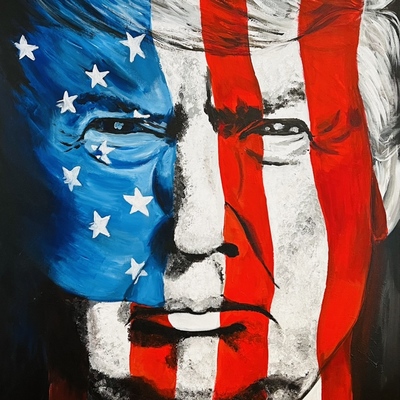
U.S. Economy Posts Strong 3% Growth While Masking Deeper Weakness
U.S. Economy's Mirage of Strength: Behind the Numbers
The Statistical Illusion Masking Economic Fragility
The U.S. economy surged to a 3% annualized growth rate in the second quarter of 2025, dramatically rebounding from the first quarter's 0.5% contraction and handily beating economists' forecasts of 2.3-2.6%. But beneath this headline triumph lies a more sobering reality: nearly 80% of this growth stems from a statistical quirk—a $11.5 billion collapse in goods imports following a tariff-driven spending spree earlier in the year.
"What we're seeing isn't sustainable momentum but rather the mathematical aftereffects of President Trump's trade policies," noted a senior economist at a major Wall Street investment firm. "Strip away the trade gyrations, and you're left with an economy crawling at sub-1% 'core' growth—essentially stall speed."
This dichotomy between robust headline figures and tepid underlying fundamentals creates a high-stakes challenge for investors navigating increasingly treacherous economic waters.

The Tariff Tango: How Trade Policy Distorted the Numbers
When the Trump administration signaled major tariff increases would take effect this spring, companies rushed to front-load imports. This corporate scramble created a surge in Q1 imports followed by a sharp 4.2% ($264 billion) decline in Q2—an artificial boost to GDP calculations that masks deeper structural challenges.
The effects ripple throughout the economy in starkly different ways. Import-intensive retailers face gross-margin squeezes of 150-250 basis points, while domestic services and intellectual property-heavy technology companies enjoy relative insulation, even experiencing slight pricing-power advantages.
"We're witnessing a bifurcation in corporate America," explained a veteran market strategist. "Those with global supply chains are absorbing significant pain, while firms with predominantly domestic operations or digital business models are weathering the storm much better."
The front-loading phenomenon has ended abruptly. May container imports plummeted 9.7% month-over-month, leaving inventories 16% above five-year norms across major retail supply chains. This inventory glut creates additional headwinds for future growth as businesses work through excess stock before placing new orders.
Labor Market's Mixed Signals: Resilience with Cracks Forming
The private sector added 104,000 jobs in July, exceeding forecasts of 75,000-90,000 and marking a sharp turnaround from June's revised loss of 23,000 positions. While this suggests continued labor market resilience, several warning lights are flashing.
Job openings fell by 275,000 to 7.44 million in the latest JOLTS report—the lowest level since early 2024. The closely watched vacancy-to-unemployment ratio declined to 1.4, a figure not seen since 2022. Meanwhile, temporary-help employment—a classic leading indicator for hiring trends—decreased at a 1.9% rate on a three-month moving average basis.
Wage growth has plateaued at a 4.4% annual pace since February, and with tariff-induced inflation taking hold, real wage gains are turning negative for many workers.
"The labor market is still standing, but it's showing increasing vulnerability," said a veteran employment economist. "By the fourth quarter, we'll likely see monthly job gains averaging around 110,000 with unemployment potentially rising above 4.3%—clear signs that weakness in demand is finally spilling into hiring decisions."
The Fed's Delicate Balancing Act Amid Political Pressure
The Federal Reserve finds itself in an increasingly uncomfortable position, caught between sticky inflation and mounting political pressure. With core inflation hovering at 2.7%—partly fueled by tariff effects—the Fed has maintained its target rate at 4.25-4.50% despite President Trump's public calls for slashing rates to 1%.
Markets remain in a holding pattern as investors await the Fed's decision later today, with major indices hovering near all-time highs. The forward price-to-earnings ratio for the S&P 500 stands at approximately 21x—one standard deviation above the 10-year median—suggesting investors are looking past current tariff noise.
"The market is essentially saying, 'We know the math doesn't add up, but we're betting the Fed will eventually capitulate,'" observed a chief investment strategist at a major asset management firm. "That's a dangerous assumption when core inflation remains stubbornly above target."
Most analysts now expect the Fed to hold steady until December, when the first rate cut of this cycle might materialize if two conditions are met: core PCE inflation falling below 2.3% and a second consecutive quarter of sub-1% final sales.
The Investor's Playbook: Navigating Uncertain Waters
For investors seeking to position portfolios amid these crosscurrents, selectivity and hedging remain paramount. Quality U.S. large-caps in technology and communication services sectors offer relative safety with their pricing power and low exposure to imported inputs. Conversely, industrials and retailers heavily dependent on Asian supply chains face heightened risks from tariff impacts and inventory challenges.
The fixed income market presents selective opportunities, particularly in 2-year Treasury securities currently yielding around 4.50%, which could benefit from the anticipated December rate cut. Meanwhile, 5-10 year TIPS (Treasury Inflation-Protected Securities) offer inflation protection with breakevens at 2.35%—a reasonable floor given tariff-induced price pressures.
Looking ahead, three scenarios dominate the 12-month outlook:
- A soft landing (35% probability) where tariffs fade and the Fed eases gradually, leading to 1.7% GDP growth and the S&P 500 potentially reaching 7,000
- Sticky stagflation (45% probability) with persistent tariffs and core inflation at 2.8%, resulting in just 0.8% GDP growth and markets retreating to 5,800
- A hard landing (20% probability) combining tariff shocks with a credit event, pushing the economy into a 0.7% contraction and markets falling to 4,750
"We're skating on the thinnest of ice," warned a prominent hedge fund manager. "The headline GDP strength is statistical noise masking incipient domestic softness. Without a material rollback of tariffs, growth will likely slow to around 1.5%, forcing the Fed's hand late this year—but only after price pressures subside sufficiently."
Investment Implications: Opportunity Amid Uncertainty
For forward-looking investors, several tactical opportunities emerge from this complex landscape. A pairs trade going long Microsoft/Meta while shorting a basket of tariff-exposed apparel names could harvest the dispersion created by policy bifurcation. In fixed income, buying 2-year Treasuries funded with SOFR-linked repo offers an attractive roll-down carry opportunity if the Fed cuts in December as expected.
More adventurous investors might consider options strategies in foreign exchange markets, particularly involving Asian currencies most exposed to supply chain disruptions. In private markets, logistics automation and data centers in the Sun Belt region remain attractive given capital expenditure substitution for offshoring and intact tax credits.
Investment Thesis
| Section | Key Point | Details | Implications / Takeaway |
|---|---|---|---|
| 1. GDP & Growth | Q2 GDP ≈ 3% | 80% from goods import collapse (–$11.5B); real final domestic sales up only 0.7% | Underlying growth ≈ stall-speed; Q3 to normalize unless tariffs escalate |
| Macro Breakdown | Net exports +2.4 ppt; Inventories +0.3; Consumer +1.0; Business Invest. –0.3; Gov’t +0.2 | Strip trade: core growth <1%; fading wage boost, capex freeze, no strong fiscal impulse | |
| 2. Labour Market | ADP +104k; JOLTS –275k | Job openings lowest since early 2024; wage growth plateaued at 4.4% | Labour cooling; expect avg. payrolls ~110k and jobless rate >4.3% by Q4 |
| 3. Tariff Effects | Front-loading ended; May imports –9.7% | Inventories 16% above norm (Adidas, Walmart); import retailers face margin hit | Tariffs shaving ~0.7 pp off GDP; supply chain stress + margin bifurcation |
| 4. Fed Policy | Stuck between Trump & inflation | Core inflation at 2.7%, too high to cut; Fed requires 2.3% PCE + weak growth | Base case: hold now, dovish pivot Nov, first 25bp cut Dec 2025; terminal 3.75% |
| Curve Forecast | Steepen from –35bp to +20bp by Q2’26 | 2y UST long vs 2y OIS pay-fixed trade favored | |
| 5. Markets & Positioning | S&P flat, rich (21× P/E) | Breadth narrow (Tech +35% YTD), tariffs may hit 2025 EPS –3–4% | Neutral/underweight S&P; overweight quality large-cap tech, underweight Asian-exposed industrials/retail |
| Other Assets | Selective BB credit, add 5–10yr TIPS, long USD (vs KRW/VND), range-trade WTI (75–88), private mkts (automation, datacentres) | Inflation hedge + relative domestic strength | |
| 6. Scenarios (12mo) | 1. Soft-landing (35%) | GDP +1.7%, CPI 2.3%, S&P 7000, 10y UST 3.75% | Easing + tariff fade = bull case |
| 2. Sticky Stagflation (45%) | GDP +0.8%, CPI 2.8%, S&P 5800, 10y 4.40% | Most likely: tariffs persist, weak growth | |
| 3. Hard Landing (20%) | GDP –0.7%, CPI 2.0%, S&P 4750, 10y 2.90% | Tariff shock + credit event = recession risk | |
| 7. Actionable Ideas | Equity | Long MSFT/META – Short tariff-hit retailers (GPS, RL, VFC) | Play dispersion on protectionist pressure |
| Rates | Buy 2y UST at 4.5%, roll-down carry ≈ 70bp if cut in Dec | Yield curve re-pricing opportunity | |
| FX | Buy USD/KRW call spread vs put | Supply chain + Fed divergence | |
| Credit & Events | Long private credit backed by domestic capex; watch for tariff-blame pre-announcements | Event-driven alpha & real-economy exposure | |
| 8. Risks & Hedges | Tariff spike | Buy SOX puts, neutral USTs | |
| Fed politicized | Long gold vs TIPS; short DXY vs CHF | ||
| Energy shock | WTI call fly 80/95/110 | ||
| China surprise stimulus | Cover USD/CNH; add EM equity | ||
| Bottom Line | GDP print masks weakness | Growth trend fading, Fed delayed until inflation softens | Stay in quality assets, layer convex hedges, stay flexible—policy drives next trend |
Past performance does not guarantee future results. The strategies discussed represent informed analysis rather than predictions, and investors should consult financial advisors for personalized guidance tailored to their specific circumstances and risk tolerance.